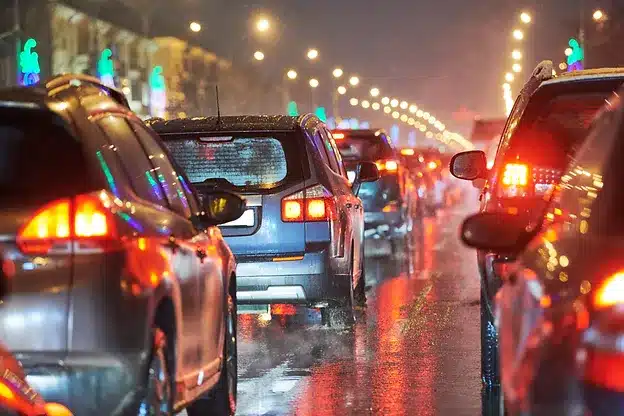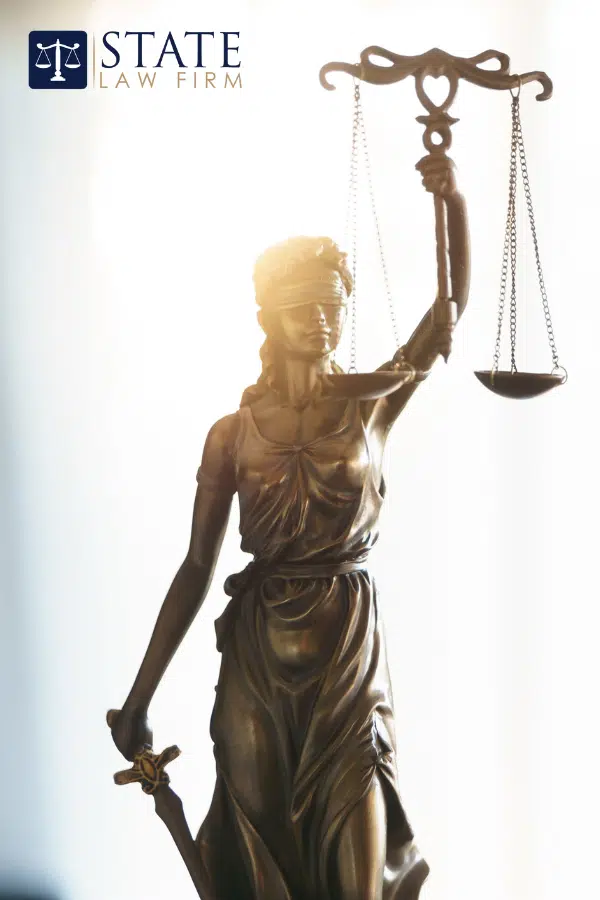
While the holidays are a very cheerful time, we see a drastic increase in car accidents during this time. According to the National Highway Traffic Safety Administration, the most fatal days of the year are December 23rd and December 24th. There are multiple reasons that contribute to the increase in collisions.
1. Drunk and Drugged Driving: A Deadly Holiday Combo
The Problem:
Alcohol-related crashes spike dramatically between Thanksgiving and New Year’s, often fueled by parties, family gatherings, and bar outings. According to the NHTSA, an average of 300+ people die in drunk-driving crashes between Christmas and New Year’s each year. In California alone, DUI arrests jumped by nearly 40% during this period.
Key Factors:
- Late-night events mean more intoxicated drivers on the road after midnight.
- “Buzzed driving” is still drunk driving. Even a BAC of 0.02–0.05% can impair coordination, depth perception, and reaction time.
- Holiday cocktails and cannabis use (especially edibles) can delay impairment effects, leading drivers to think they’re “okay” when they’re not.
Prevention Tips:
- Use a designated driver, rideshare app, or plan to stay overnight.
- Don’t mix substances—alcohol and cannabis compound impairment.
- Be extra cautious on weekend nights and early morning hours (midnight to 4 a.m.).
If you were hit by an intoxicated driver, you may be entitled to punitive damages in addition to compensation for your injuries. Talk to our personal injury attorneys for a free consultation.
2. Rainy Roads and Slippery Surfaces: The Hidden Winter Risk in California
The Problem:
While much of the U.S. braces for snow, California’s biggest holiday hazard is rain. Wet roads can be just as deadly—especially for drivers unaccustomed to adjusting their habits in winter conditions.
Stats to Know:
- Rain contributes to over 70% of weather-related crashes, per the Federal Highway Administration.
- Skidding, hydroplaning, and reduced visibility increase during California’s “wet season” (Nov–Feb).
- Low sun angles in winter months also create glare, limiting visibility.
How It Affects Drivers:
- Oil buildup on dry roads lifts with the first rain, creating a slick film.
- Braking distance increases by 50% or more on wet pavement.
- Flooding on freeways (especially in Los Angeles and the Bay Area) leads to swerving and spin-outs.
Safety Reminders:
- Slow down by at least one-third in heavy rain.
- Don’t use cruise control—your car can accelerate into hydroplaning.
- Replace wiper blades every 6 months and check tire tread regularly.
If poor visibility or slick roads played a role in your crash, our attorneys can help determine if the city or another party may share liability.
3. Holiday Gridlock: More Traffic, More Stress, More Collisions
The Problem:
According to AAA, more than 104 million people hit the roads during the December holidays, and in California, freeway congestion becomes a nightmare—especially in metro areas like Los Angeles, San Diego, and San Francisco.
Why It Matters:
- Stop-and-go traffic increases the risk of rear-end and multi-vehicle crashes.
- Out-of-town drivers unfamiliar with local roads may make sudden stops or turns.
- Longer travel times lead to increased driver fatigue and higher stress levels.
Peak Danger Zones:
- Interstates like the I-5, I-405, I-10, and US-101 see massive spikes in traffic.
- Urban intersections near shopping centers and airports become accident-prone zones.
Tips to Avoid Gridlock-Related Crashes:
- Leave earlier than usual, especially on December 23rd, 24th, and 26th.
- Use traffic apps like Waze or Google Maps with real-time updates.
- Avoid “stacking up” behind cars at traffic lights—leave space for sudden braking.
If you’ve been injured in a traffic-related collision during the holidays, it’s critical to gather evidence immediately. State Law Firm can help guide you through the next steps.
4. Distractions and Fatigue: Silent Holiday Crash Factors
The Problem:
The hustle and bustle of the season often leads to driver inattention and fatigue—two leading contributors to serious crashes.
Startling Stats:
- 1 in 5 crashes involve a drowsy driver (National Sleep Foundation).
- Drivers distracted by cell phones are 4x more likely to be involved in a crash (CDC).
- During the holidays, errands and long drives increase the average daily drive time by 40%.
Types of Distractions:
- Texting or calling while driving
- Fumbling with GPS to get to a new address
- Eating or drinking in the car while rushing to an event
- Managing kids or pets in the vehicle
Fatigue Triggers:
- Driving late at night after gatherings
- Traveling long distances without breaks
- Jet lag or holiday stress impacting sleep
How to Stay Sharp:
- Use voice navigation or pre-load your route.
- Take breaks every 2 hours or 100 miles on long drives.
- Pull over if you feel drowsy—microsleeps can be fatal.
If another driver caused your accident due to inattention or fatigue, we’ll help you prove fault and hold them accountable.
5. Pedestrian Risks and Crowded Retail Zones
The Problem:
Increased foot traffic near malls, parking lots, and holiday events poses a serious risk to pedestrians—especially after dark.
Data to Know:
- California leads the nation in pedestrian deaths.
- Over 50% of holiday-season pedestrian fatalities occur between 6 p.m. and midnight.
- Parking lot accidents account for more than 50,000 injuries annually (NSC).
Why It Happens:
- Distracted or impatient drivers
- Poor lighting and weather conditions
- Pedestrians darting between vehicles or crossing mid-block
Driver Safety Tips:
- Always yield at crosswalks and near stores.
- Drive slowly in parking garages and lots.
- Watch for children or seniors moving slowly.
Pedestrian Tips:
- Wear bright or reflective clothing after dark.
- Make eye contact with drivers before crossing.
- Avoid phone use when walking in lots or streets.
If you or a loved one was injured as a pedestrian, reach out to our team—we’ll fight for the compensation you deserve.
6. Speeding and Aggressive Driving: A Recipe for Catastrophe
The Problem:
Rushing to events, last-minute shopping, and tight schedules can cause even safe drivers to engage in aggressive behaviors during the holidays.
Key Findings:
- Speeding contributed to 29% of U.S. traffic deaths in 2023 (NHTSA).
- In Los Angeles, speed-related crashes increased by 18% in December.
- Tailgating, lane weaving, and road rage peak around Dec 22–Jan 1.
Signs of Aggressive Driving:
- Excessive honking or flashing lights
- Speeding 15+ mph over the limit
- Cutting off other drivers or rapid lane changes
What to Do If You Encounter It:
- Do not engage—avoid eye contact or responding.
- Safely change lanes or let them pass.
- If endangered, pull into a safe area and call CHP or 911.
If you were injured by an aggressive or reckless driver, we can help you pursue maximum compensation and protect your legal rights.
7. Holiday Events and Festivals: Hidden Risk Zones in California Cities
The Problem:
Major holiday events across California bring joy to communities—but also spike the risk of car accidents. With thousands of drivers and pedestrians converging in the same place, often after dark and under the influence, these events create high-risk environments for collisions and injuries.
High-Traffic Holiday Events Linked to Crash Risks
Los Angeles
- Hollywood Christmas Parade (Late November): Draws over 1 million attendees, closing off Hollywood Blvd and straining surrounding intersections.
- LA Zoo Lights at Griffith Park: Heavy traffic near Los Feliz Blvd and the I-5 corridor causes congestion and increases the risk of fender benders and pedestrian accidents.
- New Year’s Eve at Grand Park: Despite public transit options, many still drive downtown, creating hazards on 1st Street, Main, and Grand Ave.
San Francisco Bay Area
- Union Square Tree Lighting & Ice Rink: The combination of narrow streets, limited parking, and heavy foot traffic creates chaos near Powell and Geary Streets.
- Illuminate SF Light Festival (Nov–Jan): Active in 17 neighborhoods across the city, this event spreads congestion to popular areas like the Embarcadero and SoMa.
- Embarcadero Fireworks Show on NYE: With over 200,000 attendees, the roads leading to the waterfront become packed, increasing the chance of collisions with pedestrians and other vehicles.
San Diego
- December Nights at Balboa Park: This two-night celebration draws more than 350,000 people, creating traffic backups on Park Blvd and Interstate 5.
- Holiday Bowl and Parade: Influx of tourists leads to confusion and aggressive driving in the Gaslamp Quarter and surrounding freeways.
Orange County
- Newport Beach Boat Parade: The Pacific Coast Highway and Balboa Peninsula are congested with holiday traffic, especially dangerous at night with limited visibility.
- Disneyland Holiday Season (Nov–Jan): Traffic near Harbor Blvd and I-5 increases significantly, leading to a higher rate of rear-end collisions and parking lot incidents.
Real-World Risk Factors at These Events
- Parking lot collisions due to reduced visibility and tight spaces
- Rear-end crashes in stop-and-go traffic near exits and venues
- Distracted or intoxicated pedestrians crossing mid-block or outside of crosswalks
- Aggressive drivers speeding or weaving through packed intersections
How to Stay Safe at Large Holiday Events
- Use public transit, rideshare, or designated drivers when possible
- Allow plenty of time for travel and parking delays
- Be alert for tourists or event-goers unfamiliar with local traffic rules
- Avoid peak exit ramps and major intersections near high-profile venues
Injured Near a Holiday Event? You May Still Have a Claim
Crashes that occur near major public events may involve multiple liable parties. From city planning departments to private event security, identifying the at-fault party isn’t always straightforward. Our team at State Law Firm investigates every angle to ensure you receive maximum compensation for your injuries.
If you were involved in a vehicle or bus accident in Fresno or injured near a high-traffic event, don’t wait. Legal guidance early in the process is critical.
You may also want to review the benefits of hiring a personal injury attorney to fully understand how legal representation can protect your rights and improve your outcome.

